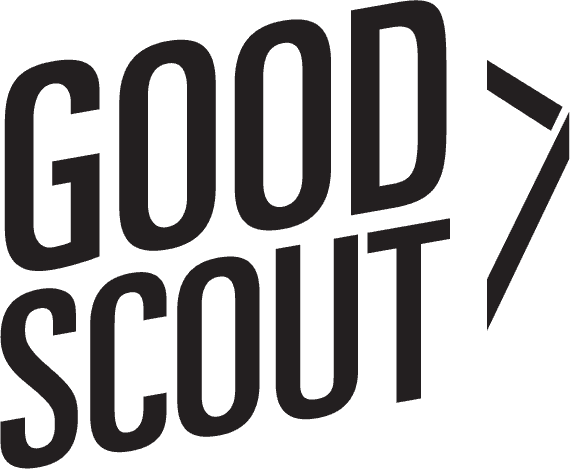Aligning your organization internally to maximize impact is an ongoing process. From small nonprofit start-ups to major legacy organizations, every group faces the tension of ensuring their strategic planning is integrated throughout departments and unifying around a single purpose.
Good Scout Group President and Managing Partner Charisse Brown Marcus shares her expertise on building bridges between your nonprofit departments and avoiding silos for the good of the whole.
What It Means to Have Enterprise-Wide Strategic Planning
When asked what it means to have a holistic approach to strategic planning for social impact, Brown Marcus shares, “There are two things: The first is the impact the organization is going to make on the world or the problem it will solve. The second is how you’re going to pay for that impact. Everything else in the organization is in support of those two things.”
While simplified, this is the essence of every nonprofit and social impact initiative. Brown Marcus also acknowledges that bringing in all teams to support the same goal and get them moving in the same direction can be quite complex in action.
Oftentimes, Good Scout consultants see organizations with departments that move out of alignment with an overarching strategy in service to mission. Sometimes, the problem is a lack of enterprise strategy or an unclear strategic direction. In other cases, departments may be so focused on their day-to-day work and not thinking carefully about how their activities influence the impact or the cost of delivering that impact.
“Know who you are and be the best at that thing,” Brown Marcus explained. “You can’t be everything to everyone.”
Brown Marcus shares an example: “In one case, a nonprofit client kept taking funding for programs they didn’t have in place. It ultimately took the organization six or seven years to fulfill these programs that fell well outside their core reason for being. The organization’s impact was diluted. Their time would have been much better spent staying laser-focused on the mission.”
When leaders and fundraisers sense that funding may be slowing down or perceive that they are in a cash crunch, one common response is to move into a reactive state that allows donors to drive programs—sometimes pursuing programs that are outside the organization’s mission.
“Decisions like these come from a mindset of growth at any cost, rather than sustainable, mission-centered growth,” Brown Marcus says. “When you do not have the right internal processes in place, along with scenarios and a decision structure when funding is slow or money is offered outside the programmatic norm, it can lead to chaos in the organization.”
By taking a mission-centered approach, she explained, organizations can work toward greater internal alignment and use it as the rallying cry for their teams and for the expansion of their brand and mission.
Ensuring Internal Alignment for External Growth
When conflict arises and organizations face crises, whether it is brand-related or largely external, teams tend to look outward for a way to fix the problem. But grasping for opportunities to patch up the exterior while ignoring internal disunity wastes both time and resources. “If you’re a mess on the outside, you’re a mess on the inside,” Brown Marcus says.
So how can organizations prepare for such crises? Articulating your social impact strategy and making it a part of every single thing you do, from interviewing new team members to making financial investments, helps to create cohesion throughout your departments and gives everyone the tools to aim for the same destination.
Strive toward a common vernacular—a shared understanding of mission-related concepts, so that every team member, whether they sit in programs or operations, finance or IT, or anywhere else in the organization, the language is largely the same.
“Oftentimes, people are drawn to nonprofit organizations because they feel like they’re moving something forward that is bigger than themselves,” Brown Marcus explains. By using that desire to your benefit and allowing them ownership over the mission, they act as brand ambassadors that amplify the good that your organization is doing in the world.
“Whatever role they have, everyone should be able to see how their job is moving the mission forward,” Brown Marcus says. This internal alignment and health will inevitably seep out and affect the external perception of your brand as every division orients themselves toward your organization’s North Star.
Utilizing Social Impact Measurement to Maximize Impact
Brown Marcus offers three key tactics for organizations seeking to bring more unity to the teams within their organization. While these are not comprehensive, they’re good starting points to begin identifying your strengths and thinking through how you can narrow the focus of your teams.
The first is clear: Have a plan. “Decide before the crisis, what is the decision-making process when we need to pivot or turn?” Brown Marcus explains. Knowing that there will be a time when your organization will face challenges at some point, and being prepared for responding to those challenges appropriately, will help to steer your teams in the right direction.
Second, get the opinion of whoever supplies the delivery function of your impact. Provide an open forum with no judgment and no skepticism. Simply ask where they see opportunities for sustainable areas of growth, and probe those possibilities.
Third, allow testing to be a part of planning. Brown Marcus suggests permitting each team to test a new function within boundaries. “Allow for that learning and failure piece to be a part of your strategy,” she says, “so there is always new bubbling up, but in a very strategic way.” This process also encourages teams to have some level of ownership over the strategy, ultimately amplifying the force behind the mission.
Reducing internal friction and maintaining continuous alignment among your teams is crucial to advancing your mission. Contact the Good Scout Group team to learn more about social impact measurement and strategic planning that maximizes your organization’s potential.
